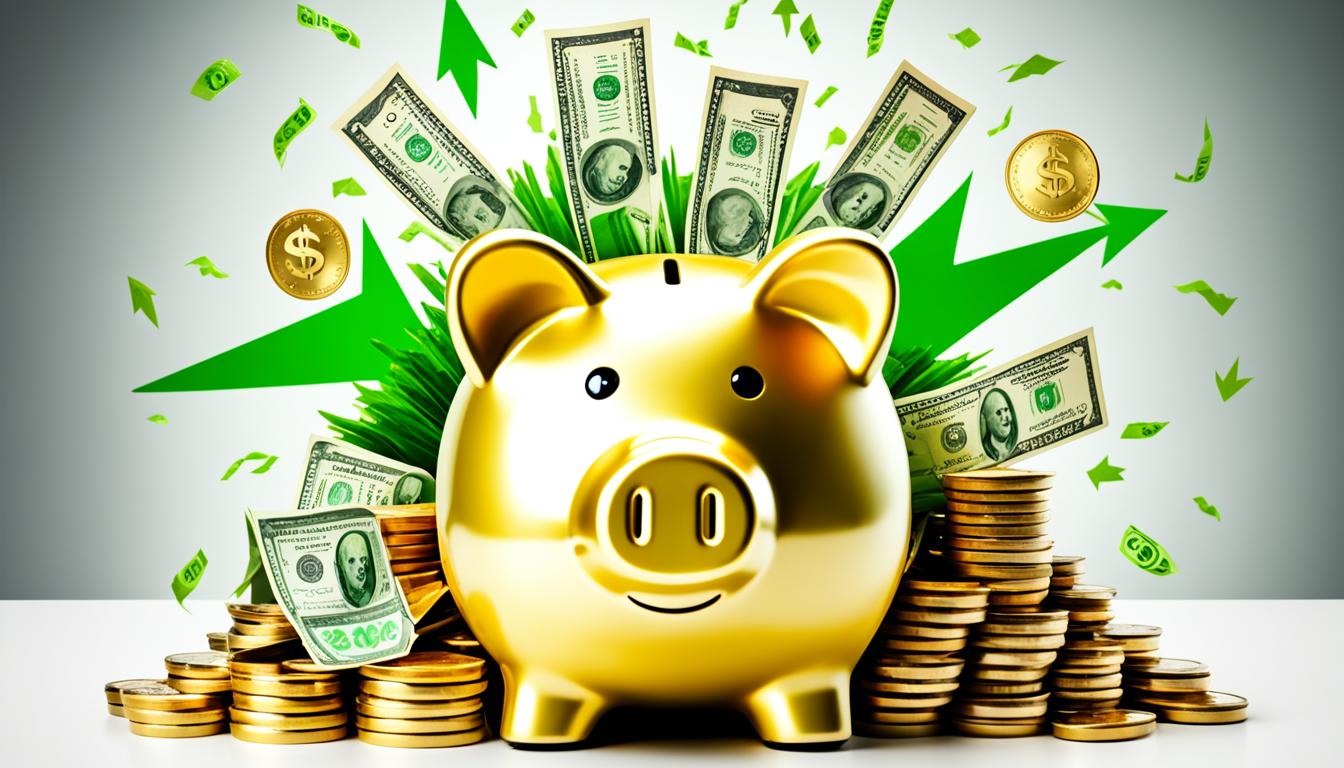High-yield investment accounts are now a key tool for those wanting more from their savings. They come with interest rates that are often higher than what traditional savings accounts offer. This means your money can grow faster. In today’s economy, knowing about these accounts and their benefits is vital for smart financial choices.
Key Takeaways
- High-yield investment accounts provide better returns than traditional savings accounts.
- Competitive interest rates are crucial for maximizing savings potential.
- Understanding bank offers can aid in choosing the right account.
- Monitoring Federal Reserve’s interest rate decisions helps in financial planning.
- These accounts contribute significantly to overall financial growth.
Understanding High-yield Investment Accounts
High-yield investment accounts are a great choice for people wanting to grow their savings. They offer higher interest rates than regular savings accounts. This means you can earn more money on your savings. Knowing how these accounts work and their benefits can help you make better financial choices.
Definition and Overview
These accounts are special savings accounts with higher interest rates. They aim to give you the best returns on your money. You can easily get to your money when you need it, making them a smart way to manage your cash.
Benefits of High-yield Investment Accounts
High-yield investment accounts have many advantages. They let you:
- Maximize your savings with competitive rates.
- Secure higher interest growth for your money.
- Access your funds easily when needed.
With rising interest rates, these accounts become even more beneficial. They offer a chance to earn more on your cash. This makes them a wise choice for building a strong savings plan.
Current Economic Climate and Interest Rates
The way we save and invest depends a lot on the Federal Reserve and interest rates. Knowing what’s happening in the economy helps us make better financial choices.
Federal Reserve’s Interest Rate Decisions
The Federal Reserve has kept interest rates high, between 5.25% to 5.5% as of July. They do this to control inflation. This affects how much money you can earn from savings and investments. It’s important to watch these rates because they show how the economy is doing and affect costs for loans.
Impact on Savings and Investments
When interest rates are high, savings and investments can earn more. This makes high-yield accounts more appealing for those saving money. If rates might go down, these accounts could become even more attractive. It’s important to think about your savings plan as rates change. These changes can either help or hurt the growth of your savings, which is key for future investments.
Comparing High-yield Investment Accounts to Other Savings Options
When looking at savings options, it’s smart to compare high-yield investment accounts with others like high-interest savings accounts, money market accounts, and CD rates. Each type has its own benefits and drawbacks. They meet different financial needs and goals.
High-interest Savings Accounts
High-interest savings accounts have lower interest rates than high-yield investment accounts. But, they are easy to get to your money without any extra fees. This makes them great for saving money quickly or for emergencies. Even with lower rates, they can still grow your money over time.
Money Market Accounts
Money market accounts offer rates similar to high-interest savings accounts. They let you write checks, which helps with managing your bills. This option is good for those who want to earn interest and still have easy access to their money.
Certificate of Deposit (CD) Rates
CD rates promise fixed returns for a certain time. They usually have higher interest rates but you can’t get your money out early. This is perfect for people who want steady growth and don’t need quick access to their cash.
How to Choose the Right High-yield Investment Account
Choosing the right high-yield investment account means looking closely at different bank offers. It’s important to understand the rates offered by online banks. By comparing various institutions, you can find big differences in interest rates and other terms. Here’s a guide to help you pick the best one.
Evaluating Bank Offers
Start by looking at what different banks offer. Think about these key points:
- Annual Percentage Yield (APY) – High APY means more money for you.
- Fees – Some accounts have fees that can reduce your earnings.
- Withdrawal restrictions – Know how often and how much you can take out, as it affects when you can use your money.
Understanding Online Banking Rates
Online banks often have better rates because they have lower costs. This means you could earn more with them compared to traditional banks. Keep an eye on online banking rates to get the best deals. Here are some tips:
- Check rates at several online banks regularly.
- Look for special offers that can increase your initial earnings.
- Read reviews and check the bank’s reliability to make a safe choice.
Strategies for Maximizing Returns
For high-yield investment accounts, using smart strategies is key. One top way to boost your money is by making a portfolio that aims for higher yields. Spread your money across different types of investments like bonds, stocks, and real estate funds. This mix helps balance risks and aims for the best returns.
This method not only makes your investments more stable but also opens up more chances for higher earnings.
Creating a Yield-enhancing Portfolio
Building a strong portfolio means picking assets with good interest rates and steady performance. Adding government bonds and stocks that pay dividends makes your strategy stronger against market ups and downs. Knowing how each asset fits into your portfolio helps you use high-yield strategies that match your financial goals.
Utilizing Compounding Returns
Compounding returns is crucial for growing your savings over time. By putting the interest back into your accounts and adding money regularly, you can see your money grow faster. This way, your wealth grows faster, helping you reach your long-term financial goals.
Sticking to a plan that focuses on compounding returns can greatly improve your savings. It also sharpens your investment strategy.



